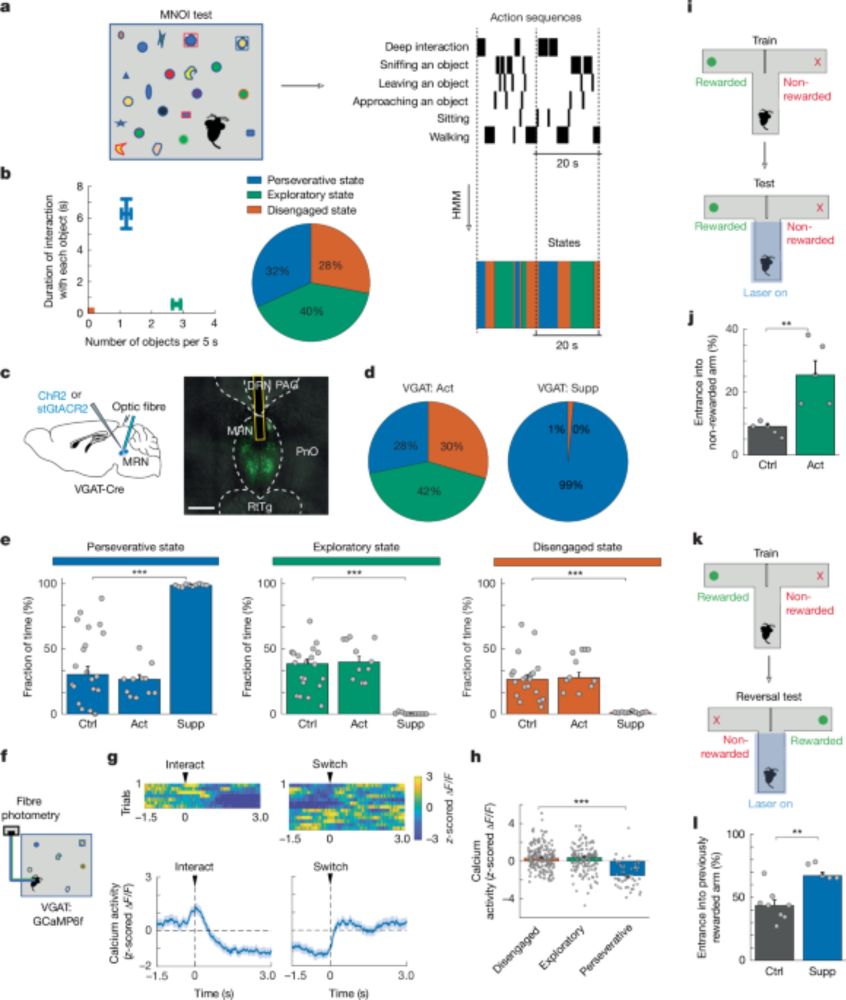Kris Jensen
@kristorpjensen.bsky.social
430 followers
130 following
24 posts
Computational neuroscientist || Postdoc with Tim Behrens || Sainsbury Wellcome Centre @ UCL
Posts
Media
Videos
Starter Packs
Pinned
Kris Jensen
@kristorpjensen.bsky.social
· Mar 14
Sonja Hofer
@sonjahofer.bsky.social
· Mar 5

A subcortical switchboard for perseverative, exploratory and disengaged states - Nature
Behavioural experiments in mice demonstrate that GABAergic (γ-aminobutyric acid-expressing), glutamatergic and serotonergic neurons in the median raphe nucleus have distinct and complementary function...
www.nature.com
Reposted by Kris Jensen
Reposted by Kris Jensen
Marine Schimel
@marineschimel.bsky.social
· Jan 31

Dynamic consensus-building between neocortical areas via long-range connections
The neocortex is organized into functionally specialized areas. While the functions and underlying neural circuitry of individual neocortical areas are well studied, it is unclear how these regions op...
www.biorxiv.org
Kris Jensen
@kristorpjensen.bsky.social
· Dec 28
Kris Jensen
@kristorpjensen.bsky.social
· Dec 24
Kris Jensen
@kristorpjensen.bsky.social
· Dec 24
Kris Jensen
@kristorpjensen.bsky.social
· Dec 24
Kris Jensen
@kristorpjensen.bsky.social
· Dec 23
Kris Jensen
@kristorpjensen.bsky.social
· Dec 23
Kris Jensen
@kristorpjensen.bsky.social
· Dec 23
Kris Jensen
@kristorpjensen.bsky.social
· Dec 21







